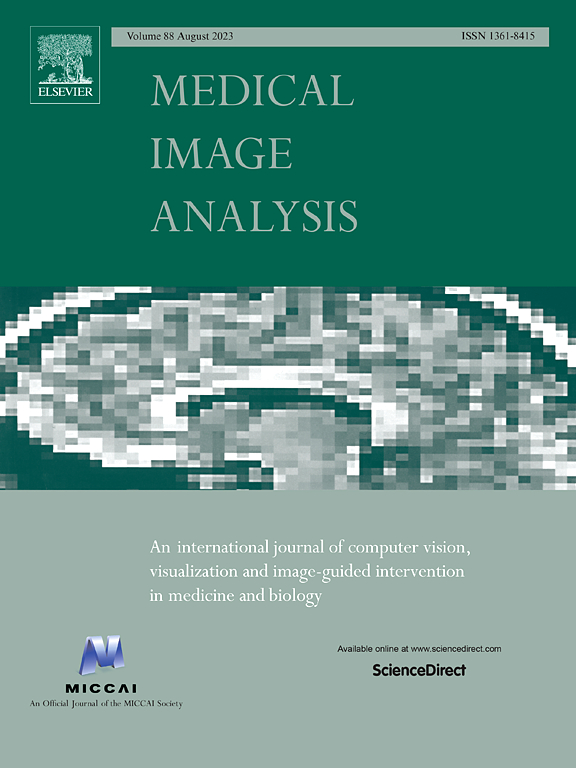2D echocardiography video to 3D heart shape reconstruction for clinical application
IF 10.7
1区 医学
Q1 COMPUTER SCIENCE, ARTIFICIAL INTELLIGENCE
引用次数: 0
Abstract
Transthoracic Echocardiography (TTE) is a crucial tool for assessing cardiac morphology and function quickly and non-invasively without ionising radiation. However, the examination is subject to intra- and inter-user variability and recordings are often limited to 2D imaging and assessments of end-diastolic and end-systolic volumes. We have developed a novel, fully automated machine learning-based framework to generate a personalised 4D (3D plus time) model of the left ventricular (LV) blood pool with high temporal resolution. A 4D shape is reconstructed from specific 2D echocardiographic views employing deep neural networks, pretrained on a synthetic dataset, and fine-tuned in a self-supervised manner using a novel optimisation method for cross-sectional imaging data. No 3D ground truth is needed for model training. The generated digital twins enhance the interpretation of TTE data by providing a versatile tool for automated analysis of LV volume changes, localisation of infarct areas, and identification of new and clinically relevant biomarkers. Experiments are performed on a multicentre dataset that includes TTE exams of 144 patients with normal TTE and 314 patients with acute myocardial infarction (AMI). The novel biomarkers show a high predictive value for survival (area under the curve (AUC) of 0.82 for 1-year all-cause mortality), demonstrating that personalised 3D shape modelling has the potential to improve diagnostic accuracy and risk assessment.
二维超声心动图视频对三维心脏形态重建的临床应用。
经胸超声心动图(TTE)是快速、无创、无电离辐射评估心脏形态和功能的重要工具。然而,检查受到用户内部和用户之间的差异的影响,记录通常仅限于2D成像和舒张末期和收缩末期体积的评估。我们开发了一种新颖的,全自动的基于机器学习的框架,以高时间分辨率生成个性化的左心室(LV)血池4D (3D加时间)模型。利用深度神经网络从特定的2D超声心动图视图重建4D形状,在合成数据集上进行预训练,并使用一种新的优化方法对横断面成像数据进行自我监督微调。模型训练不需要3D地面真相。生成的数字孪生体通过提供一种多功能工具来自动分析左室容积变化、梗死区域定位以及识别新的临床相关生物标志物,从而增强了对TTE数据的解释。实验是在一个多中心数据集上进行的,该数据集包括144例正常TTE患者和314例急性心肌梗死(AMI)患者的TTE检查。新的生物标志物显示出较高的生存预测价值(1年全因死亡率的曲线下面积(AUC)为0.82),表明个性化3D形状建模具有提高诊断准确性和风险评估的潜力。
本文章由计算机程序翻译,如有差异,请以英文原文为准。
求助全文
约1分钟内获得全文
求助全文
来源期刊

Medical image analysis
工程技术-工程:生物医学
CiteScore
22.10
自引率
6.40%
发文量
309
审稿时长
6.6 months
期刊介绍:
Medical Image Analysis serves as a platform for sharing new research findings in the realm of medical and biological image analysis, with a focus on applications of computer vision, virtual reality, and robotics to biomedical imaging challenges. The journal prioritizes the publication of high-quality, original papers contributing to the fundamental science of processing, analyzing, and utilizing medical and biological images. It welcomes approaches utilizing biomedical image datasets across all spatial scales, from molecular/cellular imaging to tissue/organ imaging.
 求助内容:
求助内容: 应助结果提醒方式:
应助结果提醒方式:


